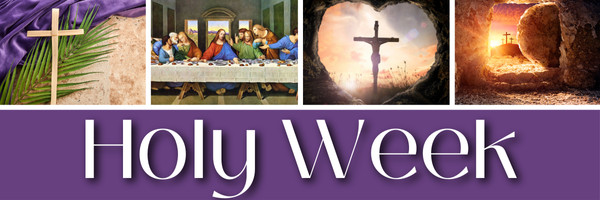 Dear readers, Catholic Online was de-platformed by Shopify for our pro-life beliefs. They shut down our Catholic Online, Catholic Online School, Prayer Candles, and Catholic Online Learning Resources essential faith tools serving over 1.4 million students and millions of families worldwide. Our founders, now in their 70's, just gave their entire life savings to protect this mission. But fewer than 2% of readers donate. If everyone gave just $5, the cost of a coffee, we could rebuild stronger and keep Catholic education free for all. Stand with us in faith. Thank you. Help Now >
Dear readers, Catholic Online was de-platformed by Shopify for our pro-life beliefs. They shut down our Catholic Online, Catholic Online School, Prayer Candles, and Catholic Online Learning Resources essential faith tools serving over 1.4 million students and millions of families worldwide. Our founders, now in their 70's, just gave their entire life savings to protect this mission. But fewer than 2% of readers donate. If everyone gave just $5, the cost of a coffee, we could rebuild stronger and keep Catholic education free for all. Stand with us in faith. Thank you. Help Now >
Mary and Joseph's Journey To Bethlehem
FREE Catholic Classes
After such a long, dangerous and grueling trip, Mary and Joseph arrived in Bethlehem, a name which means "house of bread." It is fitting that the Christ-Child born there would be the bread of life who gives himself -- his flesh and blood -- as food for eternal life.

Photo credit: Michael Payne
Highlights
12/22/2023 (1 year ago)
Published in Living Faith
Keywords: Mary, Joseph, Catholic, Jesus, faith, Bethlehem, journey
When we think of Christmas, we often think of Mary and Joseph making the journey to Bethlehem, the city of David in which Jesus was born. The pregnant and delicate Mary riding on a donkey, Joseph confidently leading the way as her husband and protector with staff in hand, the demanding and dangerous trip to Bethlehem, finding no room available at the inn upon their arrival and thus giving birth to Jesus in a cave that served as a stable. But what would the trip to Bethlehem have been like for Mary and Joseph and the Child in her womb?
To answer that question, we have to begin by considering what Mary was like. When we think of her, we often think of pious images of a delicate, light-skinned woman adorned in unblemished, ornate robes whose hands never saw a day of laundry. As wonderful as these sacred images are, they cannot possibly convey accurately the real Mary as a poor first-century Palestinian Jewish girl -- albeit a singularly extraordinary one.
There's no reason to think Mary was anything but intimately familiar with long days of hard work, as were other Jewish women of her place and time whose daily lives entailed various challenges far removed from technologically advanced, modern-day lives in first world nations. Mary likely began her day at sunrise by preparing a meal, perhaps of bread and olive oil with dried fish. Water needed to be carried and stored for drinking, cleaning, bathing, and washing clothes. Food, such as ground wheat-flour, had to be collected and prepared; firewood gathered for cooking and providing warmth in winter; clothes laundered. Consequently, Mary's workday was perhaps ten hours long. To keep up, she had to be strong and efficient.
Joseph would be no less familiar with tough times and demanding labor. His days as a tradesman -- a carpenter or builder -- began at sunup and continued until the light had gone or nearly so. He was strong and resilient, with rough, calloused hands.
Perhaps neither Mary nor Joseph were literate, as was typical of the majority of people in their day. They would have spoken Aramaic and had a familiarity with Latin and Greek. Some historical scholars believe that, in Nazareth, Mary and Joseph lived in what might be described as a small housing complex, as was often typical. It consisted of perhaps four small, one-room houses made of stone with dirt floors, connected by a central courtyard used for cooking and gathering. It was often the case that family members or kin shared these complexes, which helped them -- especially the women -- to share the heavy load of daily tasks.
Mary and Joseph, of course, lived under the burden of Roman judicial and military rule. They were taxed by both Temple and Rome; they had firsthand experience with the painful gap of inequality between rich and poor, and the oppressive economic and social policies of the Roman Empire:
The social and economic policy of the Roman Empire could well be summarised in a phrase: "the Roman system of inequality." Governing the entire Mediterranean world, Rome maintained its domination through judicial institutions developing legislation concerning property ownership and labour control - and through the use of brutal force. The whole system was based heavily on the inequality of people, which was thought to be either natural or at least inevitable, in order to secure peace and stability in the society. (Häkkinen, Sakari. (2016). Poverty in the first-century Galilee. HTS Theological Studies, 72(4), 1-9. dx.doi.org)
Yet the society in which Mary and Joseph lived was not at all stable, let alone peaceful. All of this serves as a backdrop for the 90 mile journey from Nazareth to Bethlehem -- initiated by Joseph's requirement to participate in a Roman census. Mary and Joseph were familiar with hardship, which means the journey, as difficult and grueling as it was, would not have greatly intimidated the Holy Family.
But what was it like? Do we really have any idea? Probably not. It was difficult, strenuous, and highly dangerous. The gospels fail to convey just how challenging it was. James Strange, a New Testament and biblical archeology professor, had this to say: Writers of the gospels of Matthew and Luke "are so laconic about the [Nativity] event because they assume the reader would know what it was like. [W]e have no idea how difficult it was." articles.latimes.com
How long would it have taken to travel from Nazareth to Bethlehem? People could perhaps travel about twenty miles a day. However, given Mary's late stage of pregnancy, that number would have been much less, perhaps around ten miles a day. This means their journey likely took place over a ten-day period.
The hazards were many. Wild animals, bandits, desert robbers -- all these and more factored into the nature of the trip. The valley of the Jordan river was a forested refuge for lions, bears, and wild boar. Archeologists have uncovered signs warning travelers of these kinds of dangers (ibid.). Assuming the Holy Family traveled in winter, which is not out of the question, they had to deal with temperatures around freezing during the day and well below that at night, an experience far different from modern-day conveniences made possible by a broad network of paved roads and automobiles. Consequently, warm clothing would be required, and a fire would need to be lit at night for warmth and to help stave off hungry predators.
For provisions, Mary and Joseph would have relied on bread, herbs, and oil, with perhaps some dried fish as an extra protein-boosting treat. Water would need to be carried, perhaps in wineskins.
After such a long, dangerous and grueling trip, Mary and Joseph arrived in Bethlehem, a name which means "house of bread." It is fitting that the Christ-Child born there is the bread of life who gives himself -- his flesh and blood -- as food for eternal life. But, due to the census, Bethlehem is overcrowded. There is no room in the inn. There is no room for Mary and Joseph anywhere, except in a cave -- likely on the lower level of the inn -- used as a stable to house animals, probably the very animals travelers had relied upon to get to Bethlehem, travelers who perhaps had arrived earlier and were staying at the inn.
The omnipotent Creator of the universe assumes human flesh and is born of a poor, young Jewish virgin named Mary, birthed in a stable and laid in a manger of poverty. Heaven comes down to earth. The light of humanity enters the world through the womb of Mary, the Mother of God, where men shun and reject him. God becomes man and takes the form of a slave in service to all. And, all the while, the cross stands erect on the horizon of his earthly life as Jesus of Nazareth.
All of this takes place in order to restore humankind to communion with God. What mystery. What love!
Merry Christmas.
Join the Movement
When you sign up below, you don't just join an email list - you're joining an entire movement for Free world class Catholic education.

-

- Stations of the Cross
- Easter / Lent
- 5 Lenten Prayers
- Ash Wednesday
- Living Lent
- 7 Morning Prayers
- Mysteries of the Rosary
- Litany of the Bl. Virgin Mary
- Popular Saints
- Popular Prayers
- Female Saints
- Saint Feast Days by Month
- Pray the Rosary
The surprising origins of the Easter Bunny — it’s not what you think!
The Way of the Cross: A Good Friday Reflection on Christ’s Final Journey
The Many Reasons Why We Call it Good Friday
Daily Catholic
 Daily Readings for Sunday, April 20, 2025
Daily Readings for Sunday, April 20, 2025St. Marian: Saint of the Day for Sunday, April 20, 2025
 Children's Prayer For Parents: Prayer of the Day for Sunday, April 20, 2025
Children's Prayer For Parents: Prayer of the Day for Sunday, April 20, 2025 Daily Readings for Saturday, April 19, 2025
Daily Readings for Saturday, April 19, 2025 St. Alphege: Saint of the Day for Saturday, April 19, 2025
St. Alphege: Saint of the Day for Saturday, April 19, 2025- Stewardship Prayer: Prayer of the Day for Saturday, April 19, 2025
![]()
Copyright 2025 Catholic Online. All materials contained on this site, whether written, audible or visual are the exclusive property of Catholic Online and are protected under U.S. and International copyright laws, © Copyright 2025 Catholic Online. Any unauthorized use, without prior written consent of Catholic Online is strictly forbidden and prohibited.
Catholic Online is a Project of Your Catholic Voice Foundation, a Not-for-Profit Corporation. Your Catholic Voice Foundation has been granted a recognition of tax exemption under Section 501(c)(3) of the Internal Revenue Code. Federal Tax Identification Number: 81-0596847. Your gift is tax-deductible as allowed by law.



 Daily Readings for Sunday, April 20, 2025
Daily Readings for Sunday, April 20, 2025 St. Marian: Saint of the Day for Sunday, April 20, 2025
St. Marian: Saint of the Day for Sunday, April 20, 2025 Children's Prayer For Parents: Prayer of the Day for Sunday, April 20, 2025
Children's Prayer For Parents: Prayer of the Day for Sunday, April 20, 2025 St. Alphege: Saint of the Day for Saturday, April 19, 2025
St. Alphege: Saint of the Day for Saturday, April 19, 2025

